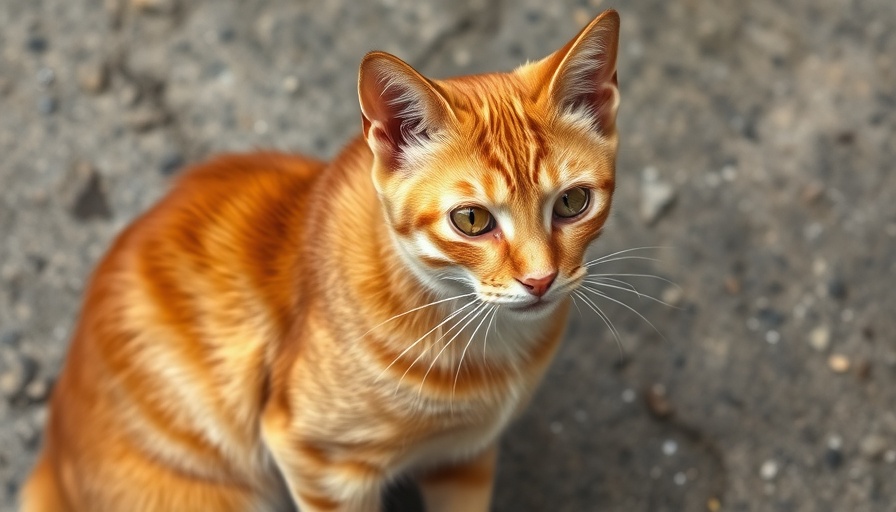
Understanding Feline Hyperthyroidism: A Crucial Guide for Cat Care Professionals
Being entrusted with a cat's health is a significant responsibility for pet parents, especially those new to cat ownership. With their independent nature, cats can often be hard to read when it comes to health issues. One condition that often remains obscure until it becomes severe is feline hyperthyroidism, which can cause notable changes in a cat's behavior and physical health. This article aims to shed light on hyperthyroidism in cats, outlining its causes, symptoms, diagnosis, treatments, and the vital role pet care professionals can play in managing this condition.
What is Feline Hyperthyroidism?
Feline hyperthyroidism is primarily caused by a non-cancerous tumor on the thyroid gland, leading to excessive production of thyroxine, a hormone responsible for regulating metabolism, heart rate, and body temperature. The two thyroid glands, located on either side of a cat's trachea, play a crucial role in maintaining metabolic balance. When they produce too much thyroxine, it can lead to health disturbances such as increased heart rate and elevated blood pressure.
Signs to Watch Out For
Awareness of the signs of hyperthyroidism can help veterinarians, vet techs, and pet nutritionists provide timely care. Symptoms include:
- Weight loss despite a significant increase in appetite
- Heightened thirst and frequent urination
- Gastrointestinal discomfort, evidenced by vomiting and diarrhea
- Restlessness or hyperactive behavior
- Poor coat condition, like thinning or change in texture
- Lumps near the throat, indicating possible thyroid enlargement
These signs may not be apparent until the condition worsens, which is why regular vet check-ups and open communication between pet parents and healthcare providers are crucial.
The Diagnostic Pathway
For an accurate diagnosis, a vet typically requires a simple blood test to measure thyroxine levels. It's essential for veterinarians to differentiate hyperthyroidism from other health issues that may present similar symptoms, such as diabetes or kidney disease.
Treatment Options: Finding the Right Path
The good news for pet parents and professionals is that hyperthyroidism in cats is treatable. Common treatment options include:
- Medication: Anti-thyroid medications that lower hormone levels can effectively manage symptoms.
- Radioactive Iodine Therapy: A more permanent solution, this treatment selectively destroys overactive thyroid tissue.
- Dietary Changes: Using specific diets that restrict iodine can also slow down hormone production.
Each treatment comes with its benefits and risks; thus, consulting with a veterinarian to select the best option based on the cat's health is vital.
The Importance of Professional Support
Veterinarians, vet techs, and pet nutritionists play a crucial role in diagnosing and managing hyperthyroidism. Pet care advocates and organizations can help raise awareness about this often-overlooked condition. By educating pet parents about recognizing the signs and providing resources for further care, these professionals can significantly impact feline health.
Future Trends: Awareness and Education
As pet ownership continues to rise, so does the need for improved education surrounding feline health issues such as hyperthyroidism. Pet food manufacturers and accessory developers are increasingly incorporating notions of health awareness into their promotional strategies. Community events aimed at fostering connections among pet owners, veterinarians, and nutritionists can further improve understanding of hyperthyroid care.
Empowering Pet Parents
For cat owners, awareness of hyperthyroidism and its impact can foster proactive care. Publishing relatable stories, testimonials from successful treatments, and accessible resources can transform the landscape of pet care. Pet parent-inspired clothiers and caterers serve as unique avenues to raise funds for research and coverage of preventative care for conditions like hyperthyroidism.
In conclusion, feline hyperthyroidism, while serious, can be managed effectively with the right knowledge, support, and resources. Whether you’re a veterinarian or a concerned pet parent, your awareness can drive collective success in feline health management.
For those interested in furthering their understanding and supporting feline health initiatives, consider getting involved with local rescue organizations or attending educational workshops.
 Add Row
Add Row  Add
Add 




Write A Comment